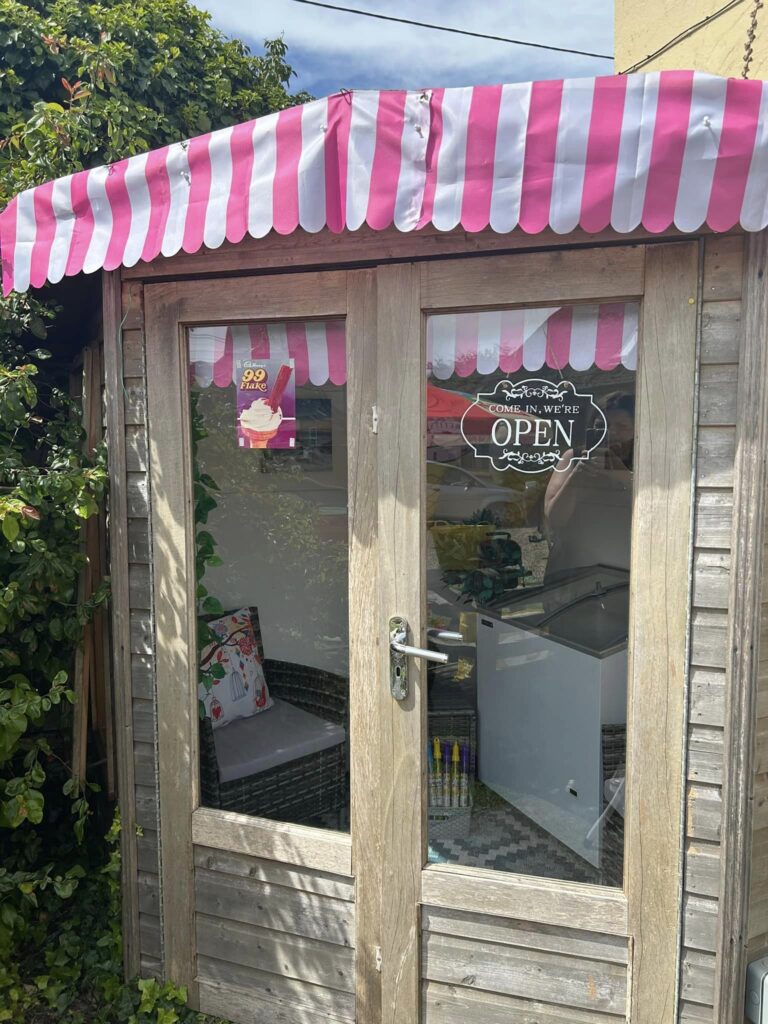Just in time for the warmer weather, The Seaton has delighted residents and their families with the opening of our ice cream hut.
Home administrator, Kelly Boweren says:” The hut is an ideal place for residents to enjoy a taste of summer from our fully stocked ice cream freezer. Tea and coffee are also available. It makes a lovely place to greet your friends and family when the weather is good and it is available every day! “
We all love ice cream!
Ice cream, the beloved treat that has become a staple of British summers, has a fascinating and rich history.
The first recorded instance of ice cream in Britain dates to the reign of Charles II. It is believed that the dessert was introduced to the English court by French chefs. Charles II himself was known to have enjoyed “icy creams” at lavish feasts. In 1671, a banquet held in honour of the King featured a frozen dessert described as “one plate of white strawberries and one plate of iced cream,” marking the first known serving of ice cream in England.
Throughout the 18th century, ice cream remained a luxury reserved for the wealthy. The process of making ice cream was labour-intensive and required access to ice houses, where ice harvested from ponds and rivers in winter was stored for use in the warmer months. Recipes began to appear in cookbooks of the era, such as “The Art of Cookery Made Plain and Easy” by Hannah Glasse, published in 1751, which included a recipe for “icing creams.”



A treat for the masses in Victorian times
The Victorian era brought significant changes to the availability and popularity of ice cream. Advances in technology, such as the hand-cranked ice cream maker invented by Nancy Johnson in 1843, made the production of ice cream easier and more efficient.
One of the most notable figures in this period was Carlo Gatti, an Italian-Swiss immigrant who set up ice cream stands in London in the 1850s. Gatti’s affordable ice cream, sold in glass penny licks, became immensely popular among the working class. This period also saw the emergence of the ice cream cart, allowing vendors to sell ice cream on the streets.
Mass appeal
The early 20th century witnessed the industrialisation of ice cream production, further democratising the treat. The advent of refrigeration technology allowed for mass production and storage, making ice cream more widely available and affordable. During this time, the first British ice cream companies were established, including notable names like Walls, founded in 1922.
World War II temporarily halted ice cream production due to rationing, but post-war Britain saw a resurgence in the treat’s popularity. The 1950s and 60s were a golden era for ice cream, with the introduction of iconic products such as the “99 Flake,” a soft serve ice cream with a Cadbury Flake, and the rise of the “Mr. Whippy” ice cream vans.
And it is these great makes that remain popular to this day – particularly with our lovely residents.
